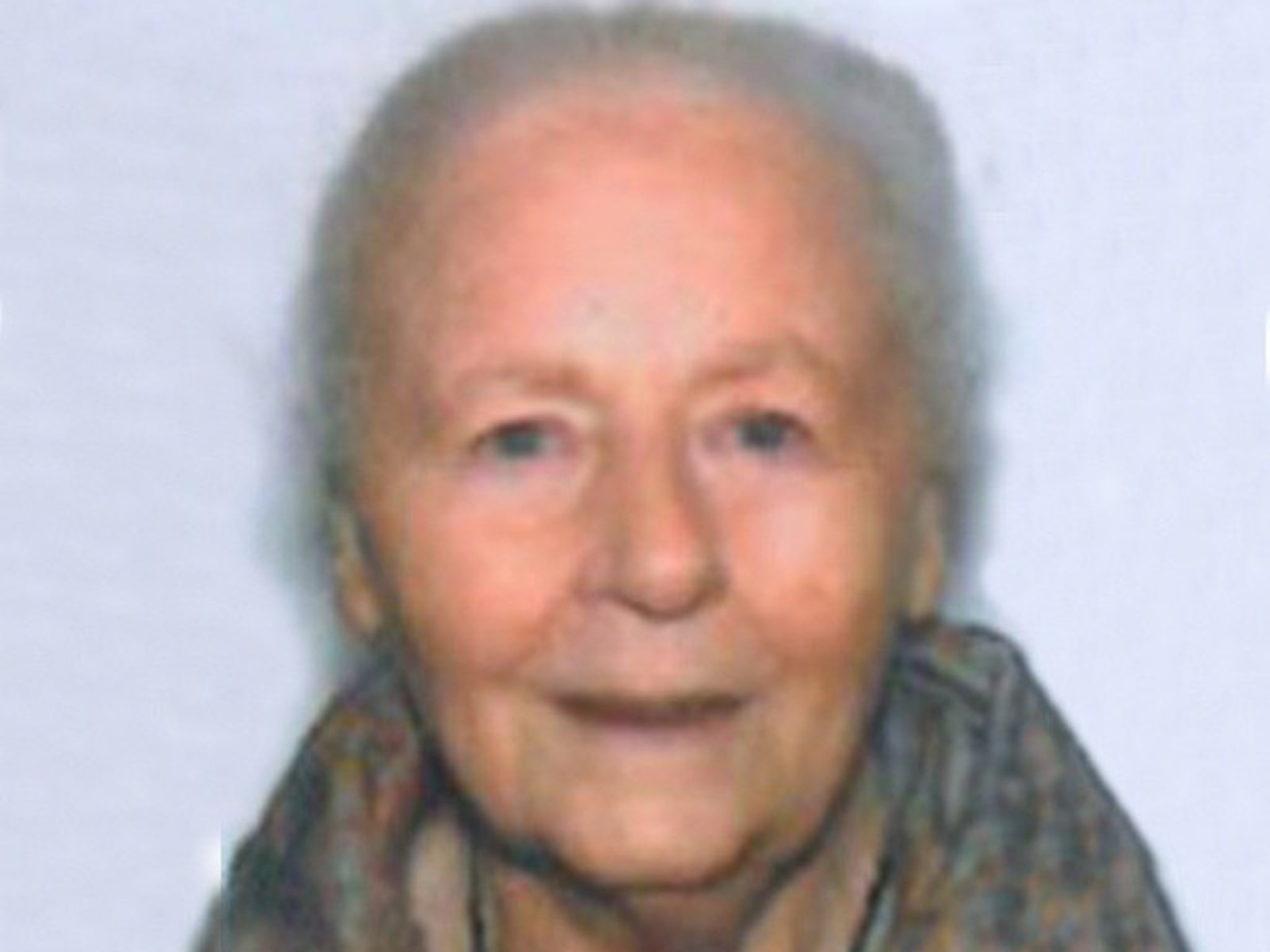Anne Cluysenaar: Writer and academic whose numinous poetry drew on her fascination with science as well as her spirituality

"Poetry is my 'country'," Anne Cluysenaar told an interviewer. “It is where I live – but this is not an escape, it is an adventure, a moving out into what lies, mysteriously, all around me. Hence my interest in science, which is a form of exploration which I admire for its questions, its discoveries and its sense of wonder.”
That adventure was brought to a brutal end on 1 November when she was murdered at Little Wentwood, a smallholding near Usk, in the Gwent countryside, which she shared with her husband, Walt Jackson. Her stepson, 48-year-old Timothy Jackson, has been arrested and charged with her murder. The literary communities of Wales and Ireland are shocked by this dreadful news.
Anne’s background was more varied than most. Born in 1936 in Brussels, the only child of artists John Cluysenaar and Sybil Fitzgerald Hewat, both of whom were of Belgian-Scottish descent, she was brought to Britain just before the outbreak of the Second World War. She was educated at Anglican boarding schools in Scotland and England, and latterly in the west of Ireland, where she learned Irish, before taking a double first in French and English literature at Trinity College Dublin in 1957. She became an Irish citizen in 1961.
Having begun writing verse as a child, while at TCD she was awarded the Vice-Chancellor’s Prize for Poetry and her first collection, Nodes, was published by Liam Miller at the Dolmen Press. She also edited the student magazine Icarus, published verse in the Irish Times and was included in Alan Swallow’s anthology New Poets of Ireland (1963). She also painted and some of her pictures currently appear in an exhibition at the Musée Charlier in Brussels in which the work of five generations of her family is featured.
A distinguished academic career beckoned. She took a lectureship at Manchester University and founded the literary magazine Continuum. But she broke off teaching for a while in order to read to the partially-sighted critic Percy Lubbock in Italy and then to work at the Chester Beatty Library of Oriental Manuscripts in Dublin. She resumed her career in 1961 when she began lecturing in English and American Literature at TCD and then, after taking a Diploma in General Linguistics at Edinburgh University, went on to lecture at King’s College, Aberdeen.
In 1965 she moved to the new University of Lancaster, where she taught General Linguistics, English and American Literature and Stylistics, and introduced one of the first Creative Writing courses at university level anywhere in Britain. Six years later she went to Huddersfield Polytechnic as Senior Lecturer in Linguistics and Literature, then took a lectureship in the University of Birmingham and began regularly to take writing workshops in schools and the wider community.
From 1976 to 1989 she was Senior Lecturer in Communication Studies and then Principal Lecturer in English and Course Leader in Creative Writing (described as “writing skills”) at Sheffield Polytechnic. At the same time she founded and was first Director of the Verbal Arts Association, later amalgamated with the body that became the National Association of Writers in Education.
After retiring from full-time teaching in 1987 she moved to Wales with her husband, Walt Jackson, to live on a smallholding. Almost immediately she involved herself in the teaching of Creative Writing in south Wales. She helped to plan the MA in the Practice and Teaching of Creative Writing at the University of Wales, Cardiff and taught on the undergraduate and MA writing courses for several years thereafter.
She drew inspiration from the literary landscape of wherever she settled. Living at Llantrisant in Gwent, she founded (with Angela Morton) the Usk Valley Vaughan Association, among the aims of which is to explore and celebrate the life and work of the poet and doctor, Henry Vaughan, and his twin brother, the priest and alchemist Thomas Vaughan. The association’s journal, Scintilla, now a substantial and well-regarded literary magazine, was launched in 1996; it publishes articles about the Vaughans, essays by practising poets, and verse exploring, in modern terms, themes significant to the brothers. She also edited the Selected Writings of Henry Vaughan.
Nor did she neglect her own writing. Among her main collections are Double Helix (1982) and Timeslips (1997, both Carcanet), and Batu-Angas (Seren, 2008). The last-named is a verse sequence exploring the life and work of the great Llanbadoc-born naturalist Alfred Russel Wallace, whose theory of natural selection was developed at the same time as Darwin’s.
Her most recent collections are Migrations (2001), which includes a long poem based on the epic of Gilgamesh, Water to Breathe (2005) and Touching Distances (2013), a diary sequence or poet’s calendar consisting of 75 poems for December 2000 to December 2012.
By virtue of her long residence in Wales and selfless commitment to the country’s literary life, she was elected to a fellowship of the Welsh Academy and I felt able to include several of her poems under the title “Vaughan Variations” in my capacious anthology Poetry 1900-2000 (2007) in the Library of Wales series.
Anne Cluysenaar was a woman of keen intellect and deep spirituality. For long inclined to Quakerism, she joined the Society of Friends a few years ago, although her modesty prevented her from speaking publicly about her Christian beliefs. Only in her poetry can her preoccupation with numinous themes be detected.
Poetry was indeed her “country”, and she undertook her “adventure” with exemplary fortitude, never losing the sense of “wonder” that makes her work so attractive and uplifting.
Anne Cluysenaar, poet and academic: born Brussels 15 March 1936; married Walter Jackson; died Llantrisant, near Usk, Gwent 1 November 2014.
Subscribe to Independent Premium to bookmark this article
Want to bookmark your favourite articles and stories to read or reference later? Start your Independent Premium subscription today.

Join our commenting forum
Join thought-provoking conversations, follow other Independent readers and see their replies